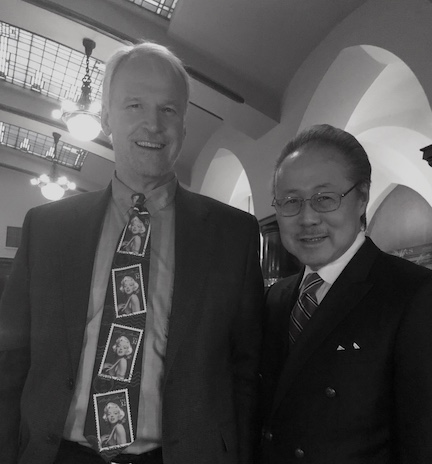Or Just Moving For A Better Portland View?

1964 South Auditorium Block Urban Renewal. I-405 going in at the bottom. Steel Bridge top right corner. I-5 runs along the west side of the Willamette. via museumofthecity.org
“The analysis of Census data showed more baby boomers than ever lived in single-family detached homes in 2012. The pattern holds true even for the eldest of the age group, born between 1946 and 1955.
That an indication that the convention wisdom may be wrong, and that boomers are perfectly content to live in their houses. Fannie Mae cites a 2010 survey from the AARP that found 84 percent of baby boomers prefer to remain in their current residence as long as they can.”
If it takes a boomer to know a boomer, this is one example.
The idea of ‘downsizing’ comes in many forms.
My favorite comes from the east coast where retirement used to mean dumping the old neighborhood and heading for…Miami.
Who recalls images of New Yorkers on the Florida beach with short shorts, tall socks, and a nice cigar?
Our urban elders waited for that day to leave the cold northeast and move into a nice retirement community with all the amenities so they didn’t have to do anything.
Boomers saw the results, the alienation, the decline. Now AARP says 84% of us want to stay put? We complain about the yard, but the work keeps us moving. We paint the rooms, power wash the driveway, organize our hoarded treasure.
Move to an apartment or condo and you lose the yard, the upkeep, and the room for organizing stuff. Boomers like stuff, preferable doubles of stuff, because one is never enough.
Moving on has always been a boomer credo, but do it right.
Do you want to be the old person in the young neighborhood or the young person in an old neighborhood? Plan accordingly.
Do you want isolation, friends, or friends in isolation? You can have both.
You don’t want to relocate to a small house with a small yard on a small street? You do if you’re kid’s in the drug life and he brings ‘friends’ over when they’re loaded. You do when a dealer knocks on the door to tell you he’s got a contract on your kid.
No condo? Too impersonal? Not when you live next to a house raided by police and you recognize the mug shots on the news.
Like every smaller house, downsizing comes from many reasons. So does staying where you are.
Airbnb opens Portland homes to new possibilities. Your beautiful interior might be just what travelers want in a trip to Portland. Why not show it off?
Once you get into the proper state of mind you might find yourself an expert in dealing with the ‘sharing economy.’
Older Portland baby boomers, those closer to the beatniks than hippies, know one thing: beatniks did their homework. They knew all about the old world they left and brought that knowledge to the new world. Hippies didn’t always make that connection.
Downsizing comes in all flavors, from actual size, to the space you use in a big house. Do enough homework to satisfy the risk, then jump in.
Regarding the top image from museumofthecity.org:
“Auditorium District which is centered on the Keller auditorium was home to many Jewish and Italian immigrants. In 1955 the Mayor’s office proclaimed an area between Southwest Front Avenue, 4th Avenue, Market Street, and Arthur Street “blighted” and was considered the “worst vice district in the City”. They particularly wanted to focus on the elderly and single males that lived on fixed or lower incomes. In other words they wanted to bring in people who brought in larger tax revenue to the city. At this time many of the Jewish families were already migrating out to the Suburbs of Hillsdale and Multnomah Village, but much of their businesses and markets were still in the Auditorium district.
“Unlike the Jewish community that moved out of the area and reformed their enclave out in the suburbs, the Italians were not as fortunate and scattered to various places. Their old Italian Federation Building was demolished symbolizing the end of their community. Many Italians moved out to the east side where rents were more expensive, and they were not able to reform a “Little Italy” due to this scattered nature. Just a few years later directly on the west side of the auditorium district, the PSU district would be added to the list of areas slated for Urban Renewal financing further eroding what remained of the Italian and Jewish culture in the area.”
In cycles of expansion and contraction, of suburban sprawl and high density building plans, be sure of your downsizing destination.


